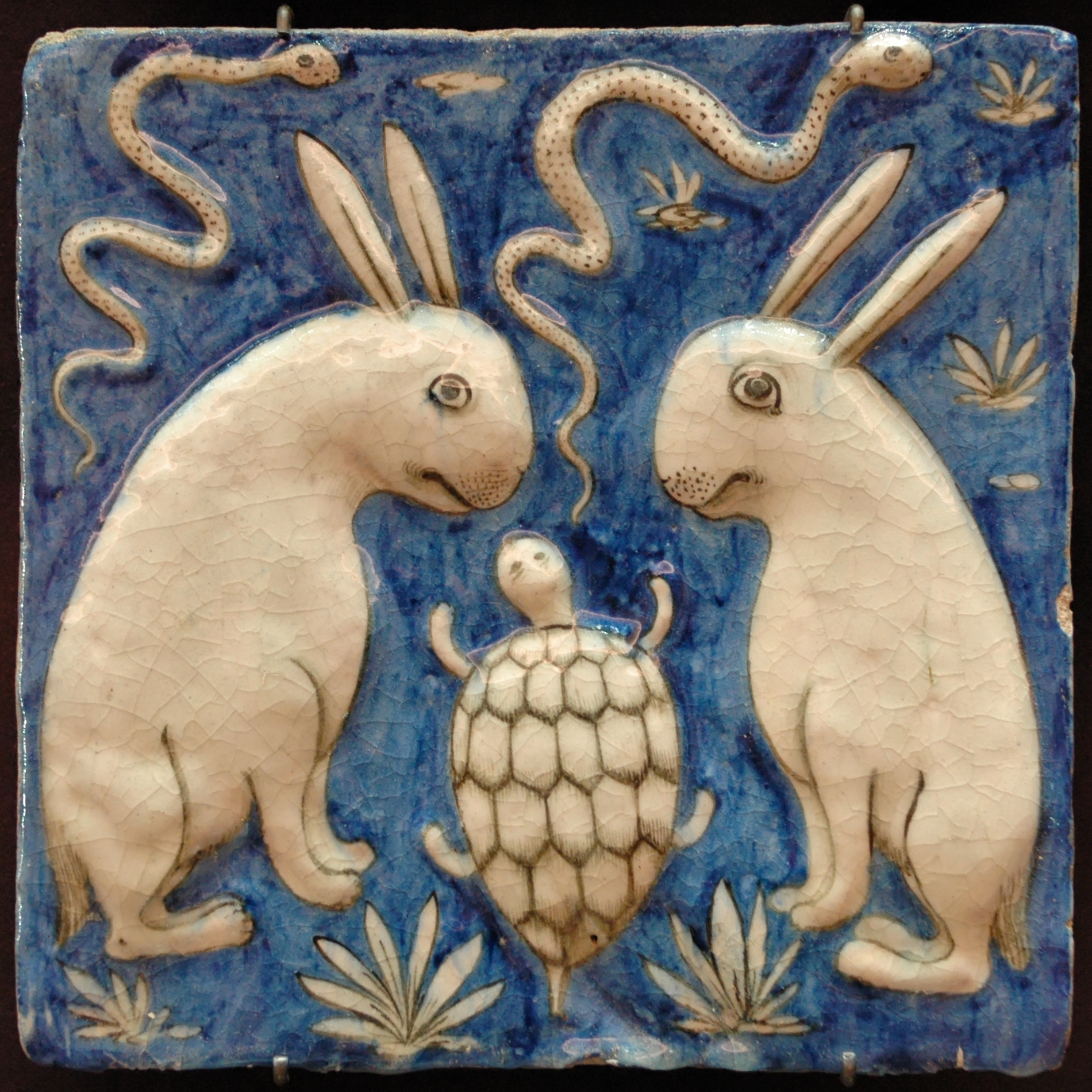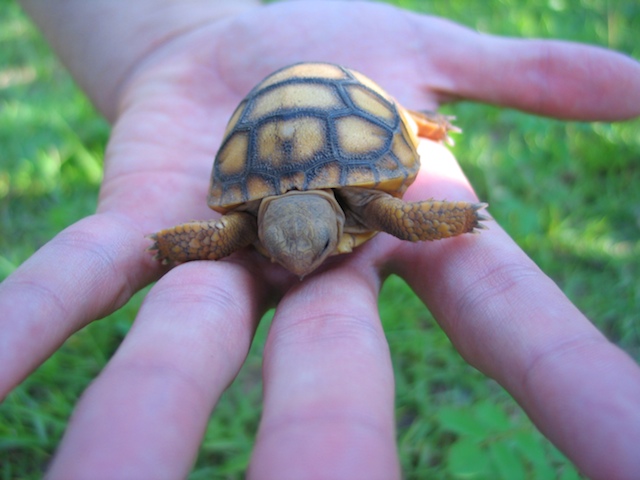|
Solitudo
''Solitudo'' is an extinct genus of tortoise that was found during the Pliocene and Pleistocene on the Mediterranean islands of Menorca, Malta and Sicily. The genus includes three described species, ''Solitudo robusta'', ''Solitudo gymnesica'' and ''Solitudo sicula'' as well as a likely fourth, undescribed species from Monte Pellegrino in Sicily. ''Solitudo sicula'', the youngest of the species, died out approximately 12.5 thousand years BP. The largest species, ''Solitudo gymnesica'', has been estimated to have reached a carapace length of . History The oldest discoveries of fossil turtles now included under ''Solitudo'' were made in the 19th century, with Leith-Adams describing remains from Zebbug Cave (Malta) as ''Testudo robusta''. In 1914 ''Testudo gymnesica'' was described based on Pliocene material found on Menorca. Younger material was later discovered in the Zubbio di Cozzo San Pietro cave in northern Sicily. These remains, which include a femur, phalanx, pubis and a ... [...More Info...] [...Related Items...] OR: [Wikipedia] [Google] [Baidu] |
Animalia
Animals are multicellular, eukaryotic organisms in the biological kingdom Animalia. With few exceptions, animals consume organic material, breathe oxygen, are able to move, can reproduce sexually, and go through an ontogenetic stage in which their body consists of a hollow sphere of cells, the blastula, during embryonic development. Over 1.5 million living animal species have been described—of which around 1 million are insects—but it has been estimated there are over 7 million animal species in total. Animals range in length from to . They have complex interactions with each other and their environments, forming intricate food webs. The scientific study of animals is known as zoology. Most living animal species are in Bilateria, a clade whose members have a bilaterally symmetric body plan. The Bilateria include the protostomes, containing animals such as nematodes, arthropods, flatworms, annelids and molluscs, and the deuterostomes, containing the echinode ... [...More Info...] [...Related Items...] OR: [Wikipedia] [Google] [Baidu] |
Phalanx (anatomy)
The phalanges (singular: ''phalanx'' ) are digital bones in the hands and feet of most vertebrates. In primates, the thumbs and big toes have two phalanges while the other digits have three phalanges. The phalanges are classed as long bones. Structure The phalanges are the bones that make up the fingers of the hand and the toes of the foot. There are 56 phalanges in the human body, with fourteen on each hand and foot. Three phalanges are present on each finger and toe, with the exception of the thumb and large toe, which possess only two. The middle and far phalanges of the fifth toes are often fused together (symphalangism). The phalanges of the hand are commonly known as the finger bones. The phalanges of the foot differ from the hand in that they are often shorter and more compressed, especially in the proximal phalanges, those closest to the torso. A phalanx is named according to whether it is proximal, middle, or distal and its associated finger or toe. The proximal ... [...More Info...] [...Related Items...] OR: [Wikipedia] [Google] [Baidu] |
Greek Tortoise
The Greek tortoise (''Testudo graeca''), also known commonly as the spur-thighed tortoise, is a species of tortoise in the family Testudinidae. ''Testudo graeca'' is one of five species of Mediterranean tortoises (genera '' Testudo'' and '' Agrionemys''). The other four species are Hermann's tortoise (''T. hermanni''), the Egyptian tortoise (''T. kleinmanni''), the marginated tortoise (''T. marginata''), and the Russian tortoise (''A. horsfieldii''). The Greek tortoise is a very long-lived animal, achieving a lifespan upwards of 125 years, with some unverified reports up to 200 years. Geographic range The Greek tortoise's geographic range includes North Africa, Southern Europe, and Southwest Asia. It is prevalent in the Black Sea coast of the Caucasus (from Anapa, Russia, to Sukhumi, Abkhazia, Georgia, to the south), as well as in other regions of Georgia, Armenia, Iran, and Azerbaijan. Evolution The oldest known definitive fossil is from the Early Pliocene of Greece, but sp ... [...More Info...] [...Related Items...] OR: [Wikipedia] [Google] [Baidu] |
Russian Tortoise
The Russian tortoise (''Testudo horsfieldii''), also commonly known as the Afghan tortoise, the Central Asian tortoise, Horsfield's tortoise, four-clawed tortoise, and the (Russian) steppe tortoise, is a threatened species of tortoise in the family Testudinidae. The species is endemic to Central Asia. Human activities in its native habitat contribute to its threatened status. Etymology Both the specific name, ''horsfieldii'', and the common name "Horsfield's tortoise" are in honor of the American naturalist Thomas Horsfield. Systematics This species is traditionally placed in '' Testudo''. Due to distinctly different morphological characteristics, the monotypic genus ''Agrionemys'' was proposed for it in 1966, and was accepted for several decades, although not unanimously. DNA sequence analysis generally concurred, but not too robustly so. However, in 2021, it was again reclassified in ''Testudo'' by the Turtle Taxonomy Working Group and the Reptile Database, with ''Agrionem ... [...More Info...] [...Related Items...] OR: [Wikipedia] [Google] [Baidu] |
Hermann's Tortoise
Hermann's tortoise (''Testudo hermanni'') is a species of tortoise. Two subspecies are known: the western Hermann's tortoise (''T. h. hermanni'' ) and the eastern Hermann's tortoise (''T. h. boettgeri'' ). Sometimes mentioned as a subspecies, ''T. h. peleponnesica'' is not yet confirmed to be genetically different from ''T. h. boettgeri''. Etymology The specific epithet, ''hermanni'', honors French naturalist Johann Hermann.Beolens, Bo; Watkins, Michael; Grayson, Michael (2011). ''The Eponym Dictionary of Reptiles''. Baltimore: Johns Hopkins University Press. xiii + 296 pp. . (''Testudo hermanni'', p. 121; ''T. h. boettgeri'', p. 29). The subspecific name, ''boettgeri'', honors German herpetologist Oskar Boettger. Geographic range ''Testudo hermanni'' can be found throughout southern Europe. The western population (''T. h. hermanni'') is found in eastern Spain, southern France, the Balearic islands, Corsica, Sardinia, Sicily, southern and central Italy (Tuscany). The easte ... [...More Info...] [...Related Items...] OR: [Wikipedia] [Google] [Baidu] |
Testudininae
Tortoises () are reptiles of the family Testudinidae of the order Testudines (Latin: ''tortoise''). Like other turtles, tortoises have a shell to protect from predation and other threats. The shell in tortoises is generally hard, and like other members of the suborder Cryptodira, they retract their necks and heads directly backward into the shell to protect them. Tortoises can vary in size with some species, such as the Galápagos giant tortoise, growing to more than in length, whereas others like the Speckled cape tortoise have shells that measure only long. Several lineages of tortoises have independently evolved very large body sizes in excess of 100 kg, including the Galapagos giant tortoise and the Aldabra giant tortoise. They are usually diurnal animals with tendencies to be crepuscular depending on the ambient temperatures. They are generally reclusive animals. Tortoises are the longest-living land animals in the world, although the longest-living species of to ... [...More Info...] [...Related Items...] OR: [Wikipedia] [Google] [Baidu] |
Gopher Tortoise
The gopher tortoise (''Gopherus polyphemus'') is a species of tortoise in the family Testudinidae. The species is native to the southeastern United States. The gopher tortoise is seen as a keystone species because it digs burrows that provide shelter for at least 360 other animal species. ''G. polyphemus'' is threatened by predation and habitat destruction. The gopher tortoise is a representative of the genus '' Gopherus'', which contains the only tortoises native to North America. The gopher tortoise is the state reptile of Georgia and the state tortoise of Florida. Etymology The specific name, ''polyphemus'', refers to the cave-dwelling giant, Polyphemus, of Greek mythology. Gopher tortoises are so named because of some species' habit of digging large, deep burrows like the gopher. Description The gopher tortoise is a fairly large terrestrial reptile which possesses forefeet well adapted for burrowing, and elephantine hind feet. These features are common to most tortoise ... [...More Info...] [...Related Items...] OR: [Wikipedia] [Google] [Baidu] |
Centrochelys Vulcanica
The Gran Canaria giant tortoise (''Centrochelys vulcanica'') is an extinct species of cryptodire turtle in the family Testudinidae endemic to the island of Gran Canaria, in the Canary Islands. Characteristics This is one of the two described species of giant tortoises that inhabited the Canary Islands from the Miocene to the upper Pleistocene. The other species is '' C. burchardi'', from the island of Tenerife. ''C. vulcanica'' was described by López-Jurado & Mateo in 1993. It is believed that the ancestors of these two species of giant tortoises reached the Canary Islands from North Africa. The majority of ''C. vulcanica'' fossils are of eggs and nests ranging in age from the Miocene until Pliocene. Bones and shells are known from the Miocene to the Upper Pleistocene. The maximum shell length is up to 61 centimeters, make it slightly smaller than ''C. burchardi'', which had a shell length range of 65 to 94 cm. Fossilized tortoise eggs have been found in the island ... [...More Info...] [...Related Items...] OR: [Wikipedia] [Google] [Baidu] |
Marginated Tortoise
The marginated tortoise (''Testudo marginata'') is a species of tortoise in the family Testudinidae. The species is endemic to Greece, Italy, and the Balkans in Southern Europe. It is the largest European tortoise. The marginated tortoise is herbivorous, and brumates for the winter. Taxonomy The marginated tortoise was formally described by German naturalist Johann David Schoepff in 1789; its specific epithet ''marginata'' is a straightforward derivation from the Latin term for 'marginated'. The nominate subspecies is the Greek marginated tortoise, ''Testudo marginata marginata''. Three additional subspecies of marginated tortoises have been named: The Sardinian marginated tortoise (''T. m. sarda'') is the name usually used to separate the population on the island of Sardinia. These tortoises have less strongly bent tiles in the posterior of their carapaces, and the posterior of the carapace is almost smooth compared with the saw-like ''T. m. marginata''. Clearly distinct ac ... [...More Info...] [...Related Items...] OR: [Wikipedia] [Google] [Baidu] |
Trochanter
A trochanter is a tubercle of the femur near its joint with the hip bone. In humans and most mammals, the trochanters serve as important muscle attachment sites. Humans are known to have three trochanters, though the anatomic "normal" includes only the greater and lesser trochanters. (The third trochanter is not present in all specimens.) Etymology "Trokhos" (Greek) = "wheel", with reference to the spherical femoral head which was first named "trokhanter". Later usage came to include the femoral neck. Structure In human anatomy, the trochanter is a part of the femur. It can refer to: * Greater trochanter * Lesser trochanter * Third trochanter, which is occasionally present Other animals * Fourth trochanter, of archosaur leg bones * Trochanter (arthropod leg), a segment of the arthropod leg See also * Intertrochanteric crest * Intertrochanteric line References External links * * {{Bones of lower extremity Trochanter A trochanter is a tubercle of the femur n ... [...More Info...] [...Related Items...] OR: [Wikipedia] [Google] [Baidu] |
Testudo (genus)
''Testudo'', the Mediterranean tortoises, are a genus of tortoises found in North Africa, Western Asia, and Europe. Several species are under threat in the wild, mainly from habitat destruction. Background They are small tortoises, ranging in length from 7.0 to 35 cm and in weight from 0.7 to 7.0 kg. Systematics The systematics and taxonomy of ''Testudo'' is notoriously problematic. Highfield and Martin commented: Synonymies on ''Testudo'' are notoriously difficult to compile with any degree of accuracy. The status of species referred has undergone a great many changes, each change introducing an additional level of complexity and making bibliographic research on the taxa extremely difficult. Most early and not a few later checklists contain a very high proportion of entirely spurious entries, and a considerable number of described species are now considered invalid – either because they are homonyms, non-binomial or for some other reason. Since then, DNA sequence ... [...More Info...] [...Related Items...] OR: [Wikipedia] [Google] [Baidu] |






